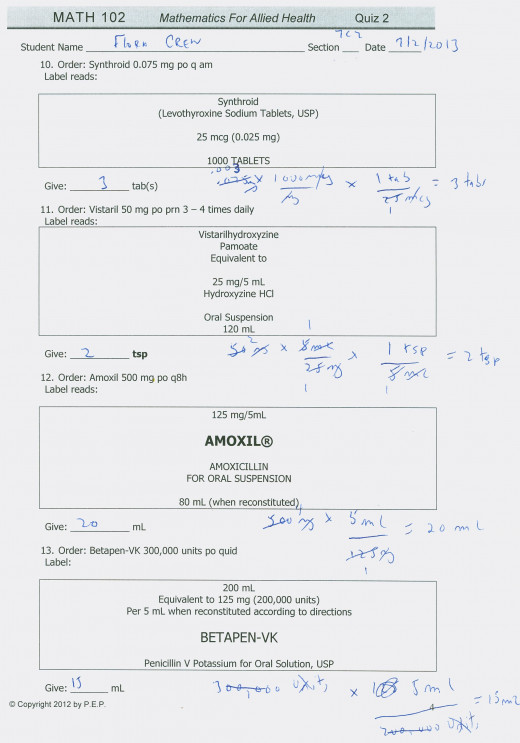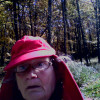Henke's Med-Math: Dosage Calculation, Preparation & Administration
Henke's Med-Math: Dosage Calculation, Preparation & Administration by Susan Buchholz is the book that I want to review. I took a class for nurses and medical personnel at Oakton Community College last summer, and this was the text for the class. I had already had some classes at Oakton in medical terminology. I had also studied math in chemistry class, physics and psychology as well as in traditional mathematics courses. So, I thought the math would not be too hard, and that I could punt on the nursing procedures. (I had previously worked as a nursing aide at a psychiatric hospital many years ago.) As it turned out, I was pretty accurate in my prediction of how the course would be taught. It emphasized the math rather than the procedures although I definitely increased my knowledge of nursing procedures by studying the book.
A lot of the introduction was a review of basic arithmetic. In the first part of the book we reviewed the metric system and other measuring systems used in nursing. This part was made easy by the fact that I was also studying numbering and counting in another math class the same semester. We reviewed various medical abbreviations such as "po" for "by mouth" and "qh" for "every hour." Buchholz explained the Latin meanings of the origins of the terms as well as the English meanings. Some of the terms I had learned at the psychiatric hospital are no longer used due to possible confusion with other term(s) that might have an entirely different definition or connotation and result in possible medical errors.
We learned how to read prescriptions and how to prepare medications for individual doses from bulk packaging. After we were taught the basics, we studied special preparations for the diabetic patient and were also introduced to some of the nursing concepts used in chemotherapy. We learned that in some cases the nurse "programmed" the rate at which the chemotherapy entered the body. We also learned how patients could self medicate pain medicine in the hospital.
There was another person in the class that was also more math oriented than nursing oriented. She was a math teacher in high school and wanted to get some ideas about giving nursing examples to her students who were interested in becoming nurses. She was a little uptight about her lack of nursing knowledge and asked me to tutor her for a session and I did. I thought her understanding was fine. I made an A in the class and think she probably did as well. The book provided enough detail to work problems in several different ways so that if one partnered with someone in the future and they worked the problem differently one would have prior experience with more than one method. In working with the high school teacher I got this experience with that. She was using the formula method and I was using a method I learned in high school chemistry of crossing out variable exchanges. So, I learned her way and she learned my way in the tutoring session.
I thought the book was quite easy but also thorough in explaining how to do the math. The book also gives an introduction to clinical procedures that a student nurse will be more exposed to when she starts working in a hospital. A final feature of the book is the emphasis on the importance of nursing education,
Once you buy the book, here are some items that might help you work the problems. You need paper, pencil, a calculator and a pencil sharpener.

Do you think nursing math should be learned before or during clinical training?
From the Experts.
From the experts! Below is a link to an article by a student nurse about how to get through nursing school.
A Bird's Eye View
- How to Survive Nursing School - Real Life Advice from a Student Nurse!
If you just got into nursing school, here are some tips on how to survive it...from someone who has been there and done that!
Good Review of Math
Even if you already know the math in the book, the examples are great for studying for the test to opt out of taking the course.





